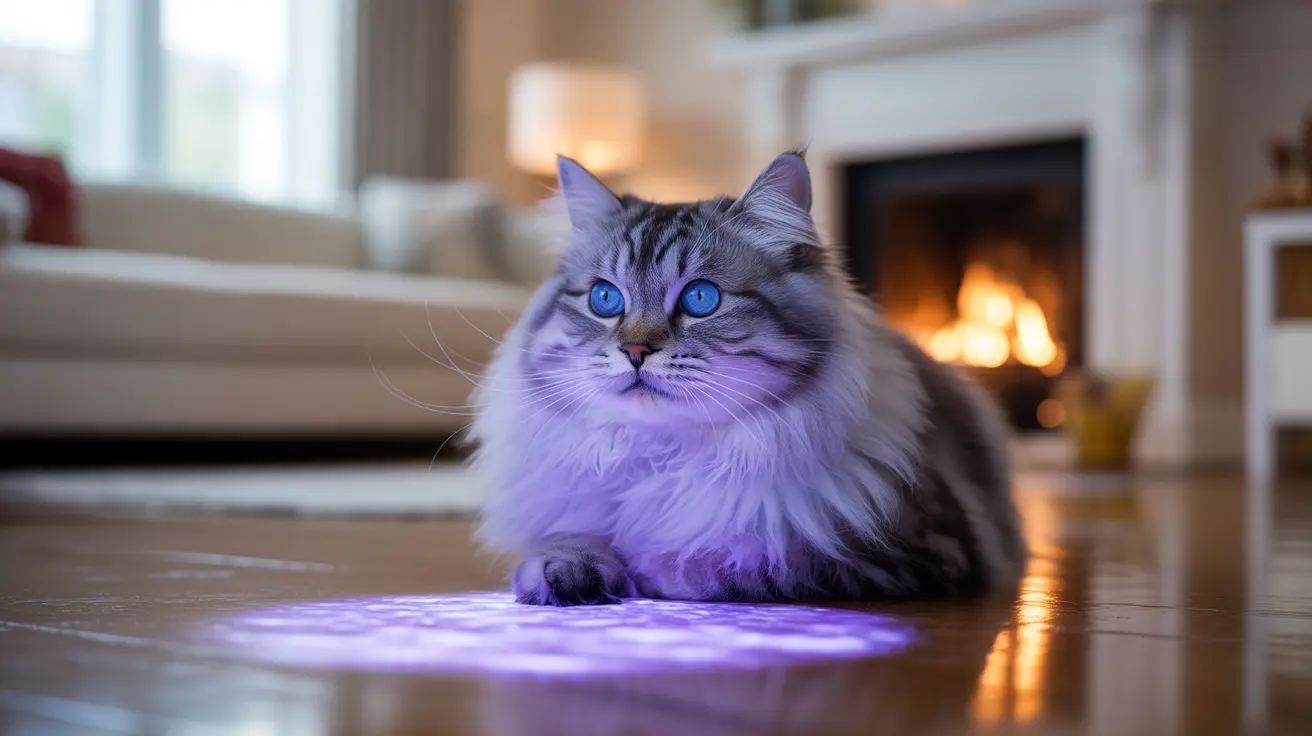Cat lovers are often fascinated by their pets' striking eye colors, and one question that frequently arises is whether cats can have purple eyes. While the internet is filled with captivating images of cats with seemingly violet-colored eyes, it's important to understand the reality behind this intriguing phenomenon.
In this comprehensive guide, we'll explore the truth about purple eyes in cats, examine the science behind feline eye coloration, and explain why certain cats might appear to have purple-tinted eyes under specific conditions.
The Truth About Purple Eyes in Cats
Let's address the main question directly: cats cannot have truly purple eyes. Despite popular myths and digitally altered photos circulating online, there has never been a scientifically documented case of a cat with genuinely purple eyes. However, some cats may appear to have lilac-tinted eyes under certain circumstances.
This appearance is most commonly seen in albino cats, whose eyes can sometimes display a soft, muted shade that might look purplish depending on lighting conditions and viewing angles. This effect is created by the way light interacts with the cat's iris rather than actual purple pigmentation.
Understanding Cat Eye Color Genetics
The science behind cat eye color is fascinating and complex. Eye color in cats is primarily determined by the presence and concentration of melanocytes – specialized cells that produce pigment in the iris. Different combinations of these pigments create the various eye colors we see in our feline friends.
Common Eye Color Combinations
- Blue eyes: Result from a complete absence of pigment
- Green eyes: Caused by low melanocyte concentrations
- Gold/copper eyes: Created by higher melanin concentrations
- Odd-colored eyes: Genetic variation causing two different colored eyes
Factors That Influence Eye Color Appearance
Several factors can affect how we perceive a cat's eye color:
- Lighting conditions
- Angle of observation
- Iris structure and texture
- Overall coat color
- Age of the cat
Why Some Cats Appear to Have Purple-Tinted Eyes
When people report seeing purple-eyed cats, they're usually observing one of these phenomena:
- Albino cats with light-sensitive eyes
- Cats with blue eyes under specific lighting
- Digital photo manipulation
- Optical illusions created by iris structure
Health Considerations and Eye Color
While unusual eye colors can be beautiful, they sometimes indicate health concerns that owners should be aware of:
- Albino cats with light-colored eyes often have increased light sensitivity
- Sudden changes in eye color can signal medical issues
- White cats with blue eyes have higher rates of congenital deafness
Frequently Asked Questions
Can cats naturally have purple eyes, or is it just a myth?
No, cats cannot have truly purple eyes. This is a myth perpetuated by digitally altered photos and misunderstandings about cat eye colors. What some people perceive as purple is usually a lilac tint in albino cats or an optical illusion created by lighting.
What causes the rare lilac or purplish tint sometimes seen in some cats' eyes?
The lilac or purplish tint is typically caused by the way light interacts with the iris in cats with little to no pigmentation, particularly in albino cats. This effect is most noticeable under certain lighting conditions.
How do genetics determine the wide variety of cat eye colors, including rare shades?
Cat eye colors are determined by the concentration and distribution of melanocytes in the iris. The amount of pigment present creates different colors, from blue (no pigment) to copper (high pigment concentration).
Are there specific cat breeds more likely to have unusual eye colors like lilac or odd-eyed patterns?
While no breeds have truly purple eyes, some breeds are known for unique eye colors. Siamese cats typically have blue eyes, while breeds like Turkish Van often display odd-colored eyes (heterochromia).
Should I be concerned if my cat's eye color changes or looks unusually purple?
Yes, any sudden changes in your cat's eye color should be evaluated by a veterinarian, as this could indicate an underlying health issue. Natural eye color develops by 12 weeks of age and shouldn't change afterward.
Understanding cat eye colors helps us appreciate these fascinating features while separating fact from fiction. While true purple eyes remain in the realm of fantasy, the natural variety of cat eye colors is remarkable in its own right.






